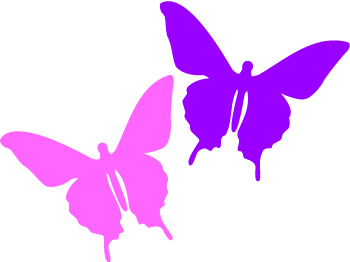Butterfly populations are a very good indicator of the health of an area's ecosystem !!
Also known as the American Painted Lady
Vanessa virginiensi are found throughout temperate North America as well as Madeira and the Canary Islands. Occasionally they can be found as far as southwest Europe.
They have also been introduced in Hawaii where they are one of four Vanessa species.
Their winding flight pattern is a reliable way of identifying them.
Their hindwings have two large eyespots while the ventral side is strikingly unique, colored with a powdering of blue scales and olive green mottling.
They also have short, somewhat clubbed antennae. This gives them a unique edge, as do its other features such as orange brown dorsal wings, powdering of blue scales, and olive green mottling on the ventral wings.
Female American Ladies are larger than their male counterparts, and tend to have slightly duller colors than males. The markings can be more pronounced in males.
There is seasonal dimorphism. They transform in different seasons. In the warmer seasons, the color is a darker, richer orange while in the cooler months it favors a paler, yellow orange hue.
During the mating season, male American Lady butterflies are known to be more active and are often seen soaring in large numbers looking for a mate. Females, on the other hand, are more passive, typically waiting patiently for males to find them.
The male American Lady butterfly starts the process by scouting for a potential mate. The male follows the female, fluttering close to her, to express his interest.
If the female shows interest, they then move to a secure location (often on the leaf of a plant or tree) for mating, which may last for several hours.
After mating, the female butterfly lays her eggs on a plant that would serve as food for the caterpillars.
Habitat loss poses the most significant danger to these butterflies.They can only survive and reproduce in certain environments.
Urbanization, industrialization, and conversion of grasslands into agricultural lands have all contributed to the decline of this species’s preferred habitats.
Climate change is another major threat.
Warming temperatures and unpredictable weather patterns can disrupt their life cycles, leading to population decreases.
Pesticide use is equally worrying.
These chemicals, used primarily for agricultural purposes, kill off caterpillars or the larval stage of these butterflies, which in turn decreases their numbers.
American Ladies are subject to Batesian mimicry.
This refers to a phenomenon where a harmless species, like the American Lady butterfly closely resembles a harmful or unpalatable species in order to protect themselves from predators.
They exhibit coloration similar to the distasteful Painted Lady butterfly. American Ladies sport intricate, colorful patterns which make them easily confused with the Painted Lady, a species with a slightly different color scheme but with very similar patterns. Because of the similarities in appearance, preditors will avoid them as they would the toxic Painted Lady.
American Ladies have an average life expectancy of approx. 2 wks.

Diet: caterpillars feed on the leaves of their primary host plants including the Plantago plant (Plantago lanceolata), ‘Everlasting’ species (Anaphalis and Antennaria), and ‘Pussy Toes’ (Antennaria plantaginifolia).
Diet: adults feed on nectar from a variety of flowers including Asters, Goldenrod, Marigold, and even Sunflowers. They also feed on over ripe fruit and tree sap,
Wingspan: 5 - 7 cm / 2 - 2.75 “
Family: Nymphalidae

* As members of the Brush Footed (Nymphalidae) family, they use their pair of shorter front legs for food tasting, and their two pairs of longer rear legs for propulsion.
The single biggest threat to butterfly survival is habitat destruction!!
Family: Nymphalidae




